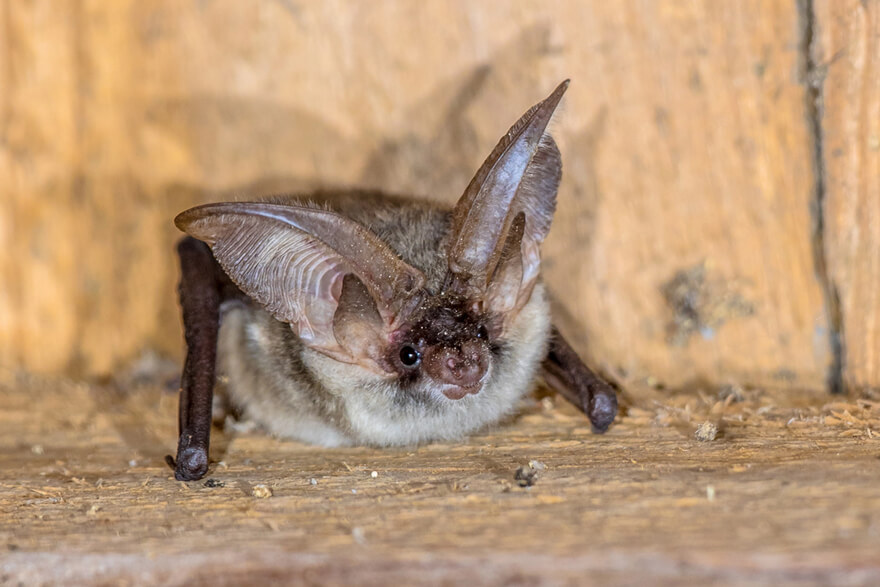- SPECIAL DISCOUNT
- 10% OFF on Full Home Recommendations + Free Consultation
- Excludes insulation services
- Contact Us
- Must mention at the time of booking
How Wildlife Activity Degrades Your Attic Insulation

Attics provide a warm, secluded environment that attracts various wildlife species. While this may seem harmless, wildlife activity can cause significant damage to attic insulation. This guide explores how pest and wildlife-damaged insulation can increase energy costs, health risks, and even structural issues in your home. Understanding these risks can help homeowners take proactive steps to protect their property and maintain a safe living environment.
Nesting Behavior and Insulation Destruction
Animals like rodents, raccoons, and squirrels often seek refuge in attics, drawn by these spaces’ warmth and protection. Unfortunately, they do more than just take shelter; they destroy insulation to create nests. Fiberglass and cellulose become loose fill in dens while foam can be gouged and tunneled. By tearing apart insulation materials, these animals compromise the structure and effectiveness of the insulation.
When animals burrow into insulation, they also create uneven surfaces. Flattened or trampled insulation loses its “R-value,” a measure of its thermal resistance. This degradation directly impacts your home’s energy efficiency, increasing utility bills. A few inches of lost loft can slash performance across wide areas. The continuous nesting exacerbates the problem, potentially leading to extensive insulation damage that requires costly repairs.
Contamination and Health Hazards
One of the most concerning effects of wildlife presence in attics is the insulation contamination with feces and urine. This issue goes beyond unpleasant odors; it poses serious health risks. Contaminated insulation can harbor pathogens like hantavirus and leptospirosis, which are dangerous to humans. Once insulation is soiled, it cannot be effectively cleaned and often needs to be replaced to ensure a safe living environment. Removal should include double bagging waste, surface sanitation, and full dry time before installing new material.
Wildlife waste also attracts secondary pests, such as insects, which can further degrade the insulation and spread diseases. The moisture from urine and droppings creates an ideal breeding ground for mold and bacteria, worsening air quality and increasing the risk of respiratory problems for the home’s occupants. Musty odors traveling through ceiling penetrations often indicate saturated batts above. Homeowners should be vigilant about checking for signs of wildlife contamination and get pest cleanup and remediation services if evidence of feces or urine is discovered.
Physical Damage from Wildlife Activity
Wildlife activity is not limited to nesting and contamination; animals are also notorious for causing physical damage to attic insulation. Rodents, in particular, are instinctive to chew, and often gnaw on insulation materials. They also tunnel through batts creating channels that collapse over time. This chewing behavior can lead to holes in the insulation, creating air leaks that diminish its effectiveness in regulating home temperatures.
This damage is not only a matter of energy efficiency; it can also compromise the structural integrity of the attic and the home’s structural integrity. Persistent wildlife activity may lead to extensive wear and tear, necessitating significant repairs and insulation replacement. Documenting locations with photos helps coordinate electricians, HVAC techs, and insulation crews in one visit.
Consequences of Pest and Wildlife Damaged Insulation
The consequences of having pest and wildlife-damaged insulation in your attic extend beyond immediate discomfort or inconvenience. One of the most direct impacts is increased energy costs. When insulation is compromised, your home loses its ability to maintain stable temperatures. This inefficiency forces heating and cooling systems to run more frequently and at higher capacities, driving energy bills. Uneven room temperatures and longer equipment run times are common clues.
Additionally, the health risks associated with degraded insulation cannot be overstated. Contaminated insulation contributes to poor indoor air quality, aggravating allergies, asthma, and other respiratory conditions. Mold growth, a common byproduct of moisture and contamination, can spread rapidly, leading to further health concerns and structural damage within the attic and beyond. Stains on ceiling drywall or around can lights may signal chronic moisture above the living space.
Preventing Wildlife Infestation and Insulation Damage
One of the first steps homeowners should take is regular attic space inspections. Look for signs of animal activity, such as droppings, nests, or unusual noises. Focus on eaves, around vents, and along ductwork where trails form. If you suspect an infestation, it is best to contact wildlife control services to safely remove the animals and assess the extent of the damage. Humane removal should precede any insulation work so no animals are trapped.
Sealing entry points is another effective strategy for preventing wildlife infestations. Animals often enter through small gaps or openings in roofs, vents, or eaves. By sealing these entry points, you can deter animals from entering your attic in the first place. Install tight metal mesh on vents and reinforce loose flashing and fascia seams. Additionally, maintaining a clean attic environment by removing potential food sources and debris will make the space less attractive to wildlife.
Top-rated Pest Cleanup and Remediation Services
Wildlife activity in attics poses significant risks to your home environment’s structural integrity and health. From damaging insulation through nesting and contamination to causing physical destruction, the impact of wildlife on attic insulation is profound.
If you suspect wildlife has damaged your attic insulation, contact us at Best Pest & Wildlife Control for professional assistance and effective solutions. From Colorado to Arizona, we serve clients throughout the Western United States.
CONTACT US FOR A FREE QUOTE
Feel free to give us a call or send us an email with any questions or comments you have.
